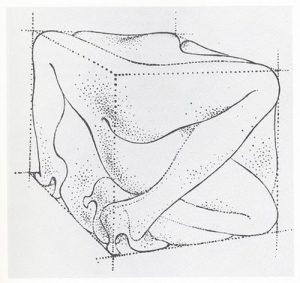Expansion & Contraction (Upd: Apr 14, ’22)

What causes us to expand or collapse? Once the qualia/image world is found, this is what is doing the expanding and collapsing.
Expansion can be thought of as opening and contraction can be thought of as closing.
Someone blows your body up like a balloon till it can no longer expand unless it pops. Then the air gradually leaves as if the life force is sucked from you. Try expansion with inspiration and feel all of the skin breathing. At every surface, feel arrows (energy, qi, awareness) pointing in your direction. If you do not feel the skin breathing, inhale like a yawn and at the peak of the yawn, sustain the feeling. When contracting, feel arrows pointing away from you. Example qualia-world: You are a blow-up doll and you are in the process of being deflated or inflated.
Try expansion/contraction in varying body positions, especially with the fetal position. Also imagine that you are breathing in everything you need, and breathing out everything you do not need (stale air).
Note: With every expansion/opening, there is always a contraction/closing happening somewhere. For instance, contraction or closing of the body into a curled ball happens to open/expand the back.
Exercise: Shifting Expansion/Contract without Changing Shape
To show how there is both expansion and contraction going on with every shape, one can switch between the two. For instance, inhale and stretch the arm up and bow your body to the side, feeling the expansion of the whole side. Then exhale without changing shape and focus on the contraction on the opposite side. Essentially, it’s the same shape, but a different side expansion or side contraction is leading.
The two extremes of the contraction (like Hijikata’s Boxed Body of which Figure 1 is a good example) or expansion (like pipe about to burst) are examples of the extreme ends of the regeneration/reduction of typical human uses of size.
Boxed Body
Contemporary Metaphor Theory
In terms of contemporary metaphor theory, expansion and contraction encompasses the image schema of FULL-EMPTY which is a sub-image schema of CONTAINER. Image schemas to Lakoff and Johnson are “recurrent patterns in perceptual-motor experience that derive from our bodily interaction with the physical world.”¹ According to SIL International Glossary of Linguistic terms, a container schema entails a: (1) boundary; (2) enclosed area or volume; (3) excluded area or volume. With the Full-Empty image schema, expansion is full and contraction is empty.
Also related to our embodied expansion and contraction is the image schema CENTER-PERIPHERY involves (1) a physical or metaphorical core and edge and (2) degrees of distance from the core.³
Reverse Breathing
The natural form we take when we expand our body is inspiration, though we can also utilize expiration when expanding the body (and hence inspiration when contracting the body), which gives a whole new feeling.
This type of breath-guided movement is directionally intense. In other words, it is as if you sacrifice one’s own being (sustainability) to either tyrannically contract (suck the energy/information but in result leaves you shriveled) or tyrannically expand (giving out energy/information like force-feeding or going kamikaze). Such breathing can be utilized to highlight a non-integrated shadow or subbody.
De/reterritorialized Expansion/Contraction
Is when the idea shifts from another channel such as expanded or contracted emotion, sound, human relationship, etc.

